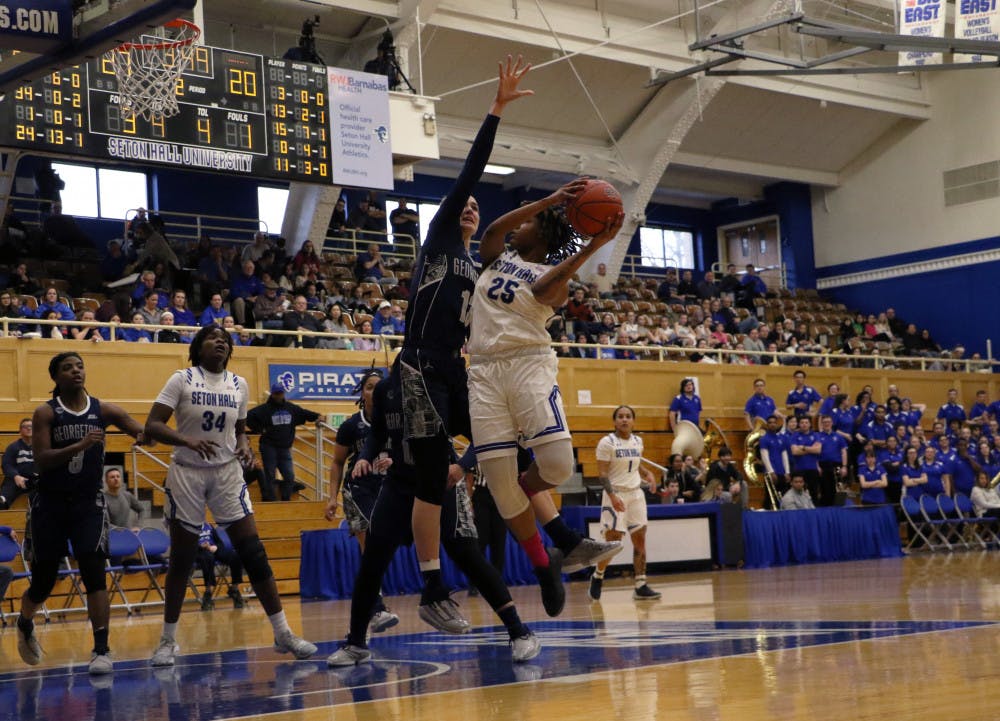The student section at a college basketball game can often be a scary place. The Cameron Crazies at Duke and the Rock Chalk Jayhawk faithful of Kansas have become a thing of legend in the history of college hoops. Opposing players fear it, while home fans embrace it. Some fans just try and stay away in fear of personal injury. One thing, however, is for sure: the student section in college basketball plays a pivotal role in the home court advantage.
Seton Hall basketball, since their move to Newark's Prudential Center in 2007, has featured two student sections on either end of the arena behind each basket. Each end, laden with cheerleaders and students in a sea of blue, was created in an attempt to fulfill the student's role as the sixth man. Not everyone, however, thought the situation was ideal.
"I don't think we ever really had a true home court advantage," Dean Patrick Hobbs said in a phone interview.
Hobbs, who is the current Dean of the Seton Hall University School of Law, was appointed the general overseer of the Seton Hall Department of Athletics by recently retired school president Msgr. Robert Sheeran and was the key decision maker on the matter regarding Seton Hall basketball's new student section.
"I thought our students were too removed from the game," he said. "The best place to put the students inside the baselines was behind the opponent's bench, so that is what we did."
Hobbssaid the location puts the students in a prime situation to be seen on television which would add to the visual aspect of the game for fans watching at home.
The new student section, which opened this basketball season, has garnered much excitement from students who plan on adding to the home court advantage. Hobbs said Seton Hall is the first Big East school to implement a student section behind an opponent's bench.
Some fans have even started a group called "Hall's Hecklers" with an aim to help create a home court advantage for the team by taunting opposing players.
"I applaud their desire and it's fantastic that they want to contribute to the atmosphere," Hobbs said. "I would just urge them to change the name. Heckling has a negative connotation to it, so I would definitely change the name of the group."
Hobbssaid Seton Hall is in a much needed rebuilding period. With the additions of men's coach Kevin Willard and women's coach Anne Donovan, the program is looking forward to a period of progress and change for the betterment of all sports.
Many schools have creative traditions which further the notion of home court advantage. Kansas University's student section, for example, sings the school alma mater before each home game before simultaneously covering their faces by pretending to read the school's newspaper during the announcement of the opponent's starting lineup.
"The students are the leaders," Hobbs said. "We want something unique. We want people to say that coming to a Seton Hall game is a special experience, and we can do that by having our students create new traditions for the future of the program."
While Hobbs understands that change cannot happen overnight, he has focused his effort on making the Prudential Center a difficult place to come for opposing players.
"Seeing that presence and feeling it, and seeing the sea of blue shirts, tells everyone that they're on Seton Hall's home court," he said. "It creates a different atmosphere, one we can all be excited about."
Dean Hobbs also noted that in addition to his desire to create an exciting experience for all students, he plans on refining his search for a successor to Joe Quinlan, who recently vacated his post as athletic director.
"It's an exciting time for all of us," said Hobbs. "I have already received some resumes and in the coming weeks, I'll be making an aggressive search for a new Director of Athletics."
Hobb's main sentiment is that positive change begins with the students and it is imperative to keep morale high.
"It's a new era at Seton Hall," he said, "and the athletes need the students behind them. The students are the key."





